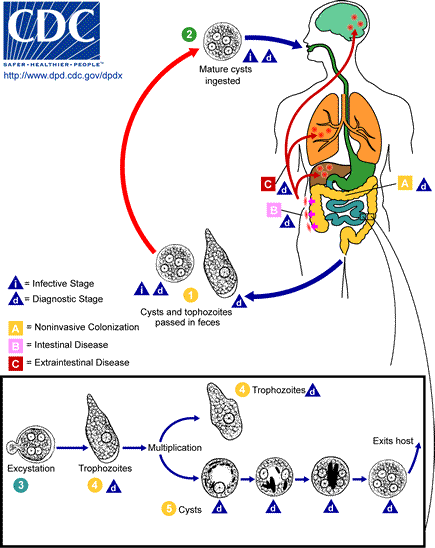Ficheiro:Entamoeba histolytica Amebiasis LifeCycle.gif
Entamoeba_histolytica_Amebiasis_LifeCycle.gif (435 × 548 píxeis, tamanho: 28 kB, tipo MIME: image/gif, 0,2 s)
Histórico do ficheiro
Clique uma data e hora para ver o ficheiro tal como ele se encontrava nessa altura.
| Data e hora | Miniatura | Dimensões | Utilizador | Comentário | |
|---|---|---|---|---|---|
| atual | 14h26min de 29 de abril de 2006 |  | 435 × 548 (28 kB) | Patho | {{Information| |Description= Amebiasis [Entamoeba histolytica] Life Cycle of Entamoeba histolytica Cysts and trophozoites are passed in feces . Cysts are typically found in formed stool, whereas trophozoites are typically found in diarrheal stool. |
Utilização local do ficheiro
A seguinte página usa este ficheiro:
Utilização global do ficheiro
As seguintes wikis usam este ficheiro:
- cs.wikipedia.org
- da.wikipedia.org
- de.wikibooks.org
- he.wikipedia.org
- hu.wikipedia.org
- id.wikipedia.org
- sv.wikipedia.org


